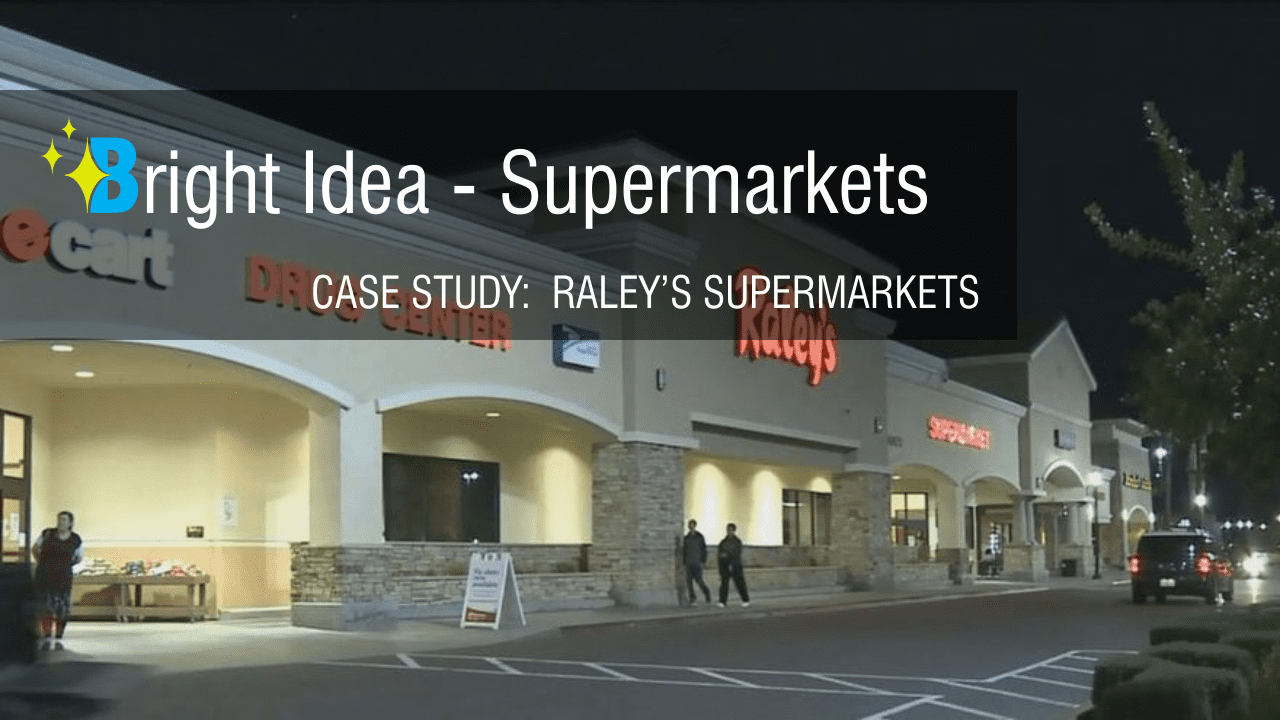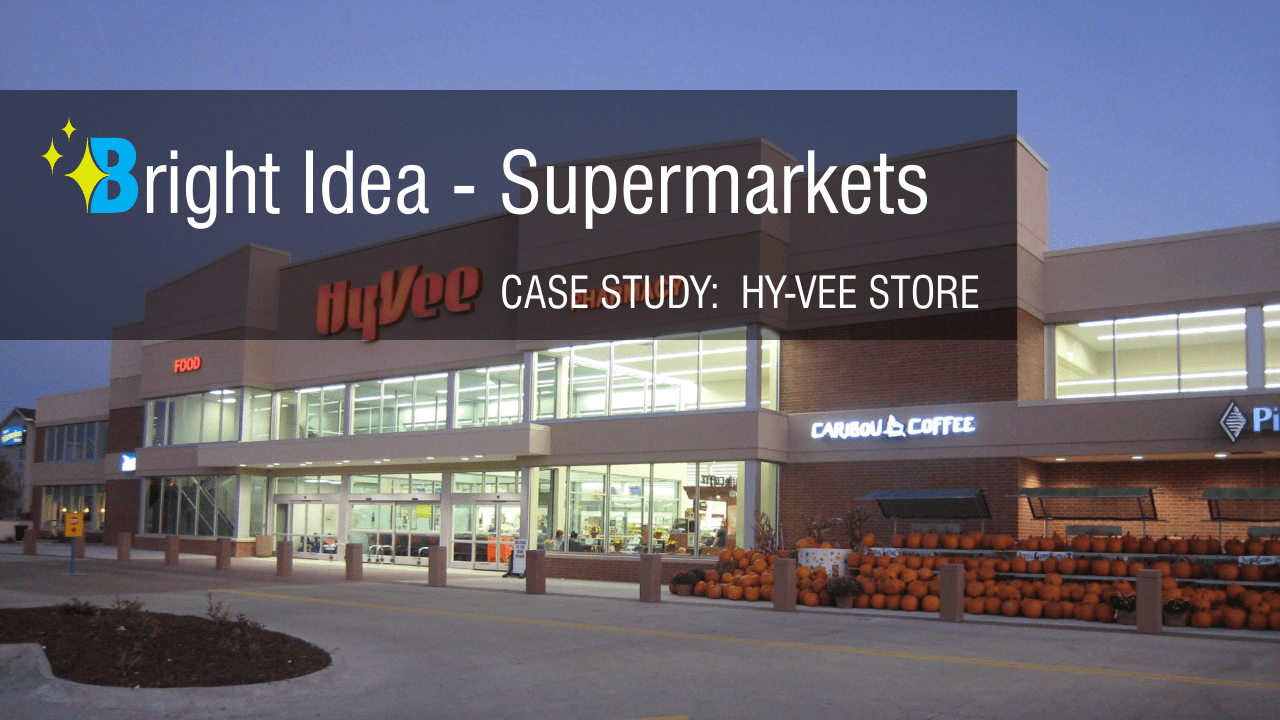
This report summarizes an assessment project conducted to evaluate light-emitting diode (LED) luminaires with bi-level operation in an outdoor parking lot application. The project replaced metal halide (MH) fixtures of nominal 320 watts2 with bi-level LED luminaires from BetaLED equipped with motion sensors. Quantitative light and electrical power measurements were taken to compare base case MH performance with that of the LED replacement luminaires. Economic performance of the LED luminaires as compared to MH was also estimated and qualitative satisfaction with the LEDs was gauged with a customer survey.
The facility selected for this demonstration is a Raley’s Supermarket parking lot containing 16 polemounted 320-watt MH dropped-lens ‘cobrahead’-style luminaires. The demonstration area is approximately one-half of the parking lot. Within the parking aisles are four poles, each with two Type V distribution fixtures. The easternmost poles in the demonstration area each included one flood light directed east toward the store front, in addition to the twin-mount Type V luminaires3. The area east of these poles was not included in the illuminance performance evaluation, due to influence by the flood lights.
Read the full report: https://www1.eere.energy.gov/buildings/publications/pdfs/ssl/gateway_raleys.pdf






 Whole Foods Market is working with the National Renewable Energy Laboratory (NREL) on a retrofit and a new construction CBP project. This case study is a snapshot of the progress to date of the Whole Foods Market CBP new construction project in Raleigh, North Carolina. It describes the successes and challenges of working collaboratively and using strategies and technologies that meet Whole Foods Market’s business criteria to dramatically reduce energy consumption. The new Raleigh store is currently under construction, and is expected to be completed in the spring of 2011.
Whole Foods Market is working with the National Renewable Energy Laboratory (NREL) on a retrofit and a new construction CBP project. This case study is a snapshot of the progress to date of the Whole Foods Market CBP new construction project in Raleigh, North Carolina. It describes the successes and challenges of working collaboratively and using strategies and technologies that meet Whole Foods Market’s business criteria to dramatically reduce energy consumption. The new Raleigh store is currently under construction, and is expected to be completed in the spring of 2011.